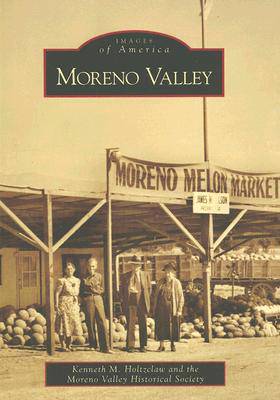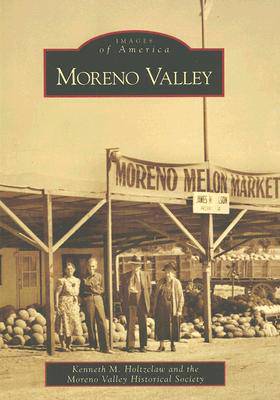
Door een staking bij bpost kan je online bestelling op dit moment iets langer onderweg zijn dan voorzien. Dringend iets nodig? Onze winkels ontvangen jou met open armen!
- Afhalen na 1 uur in een winkel met voorraad
- Gratis thuislevering in België vanaf € 30
- Ruim aanbod met 7 miljoen producten
Door een staking bij bpost kan je online bestelling op dit moment iets langer onderweg zijn dan voorzien. Dringend iets nodig? Onze winkels ontvangen jou met open armen!
- Afhalen na 1 uur in een winkel met voorraad
- Gratis thuislevering in België vanaf € 30
- Ruim aanbod met 7 miljoen producten
Zoeken
Omschrijving
The original inhabitants of Moreno Valley were Native Americans, the Cahuilla and Shoshone. Rock drawings and granite metate bowls used to grind acorns can still be found in this area. This was the setting found by the early Spanish explorers. The first small town to appear in the valley was Alessandro, built in 1888 along old Highway 395, a mile or so south of Alessandro Boulevard and extending a short distance east to what later became Alessandro Flying Field. As agriculture in the area increased water demands, severe drought caused a decrease in the water supply, and a few years later, the entire valley was nearly deserted except for a few dry farms producing wheat, oats, and barley. Two facilities, March Air Force Base and Camp Haan, spurred growth during World War II, and water was imported to the area, resulting in the approximately 175,000-person metropolis of Moreno Valley witnessed today.
Specificaties
Betrokkenen
- Auteur(s):
- Uitgeverij:
Inhoud
- Aantal bladzijden:
- 128
- Taal:
- Engels
- Reeks:
Eigenschappen
- Productcode (EAN):
- 9780738555690
- Verschijningsdatum:
- 1/11/2007
- Uitvoering:
- Paperback
- Formaat:
- Trade paperback (VS)
- Afmetingen:
- 173 mm x 233 mm
- Gewicht:
- 317 g

Alleen bij Standaard Boekhandel
+ 69 punten op je klantenkaart van Standaard Boekhandel
Beoordelingen
We publiceren alleen reviews die voldoen aan de voorwaarden voor reviews. Bekijk onze voorwaarden voor reviews.











